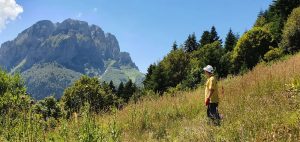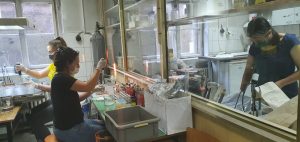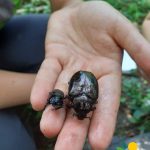What kind of plant species live in high mountain mires? How do they breathe or feed when in wetlands there is a lot of water and very few oxygen? Are some plant species alive thanks to the specific soil characteristics in these habitats? Maybe answers are hidden where you cannot see – microorganisms? The basis of the answers for all of above questions and more, are the interactions in one ecosystem. Moreover, exactly interactions are in the center of ecosystem research, and of course, our attention!

Collection of material during the field trips on the Babasanica locality
In order to understand ecosystem functionality, we have selected three different components in our wetlands on Shar Mt.
- producers (the plants)
- abiotic component (soil)
- decomposers (microorganisms)
We have collected material from all of them by conducting field activities in order to proceed with analyses in laboratory. Ahead of us, there is a lot of time and effort that we will invest to do these analyses. As a result, we will get a sea of values and numbers. These are all symptoms that a patient tells their doctor. A good diagnostician should think logically, imagine all the processes and functions, be open to discussion of interesting hypotheses, but also try to find answers. Same as an ecologist for their ecosystems.

Lab work in the microbiology lab


